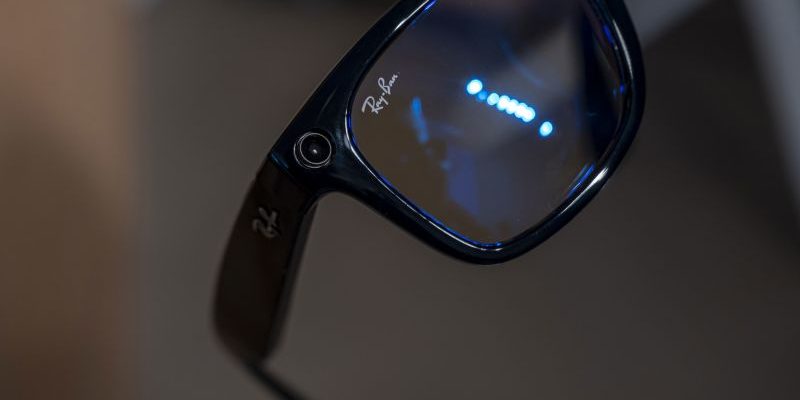
The attacker who drove a truck through New Orleans’ Bourbon Street on New Year’s Day used Meta smart glasses to scout the scene weeks earlier, according to the FBI.
Shamsud-Din Jabbar stayed at a rental home in New Orleans beginning October 30 and wore the smart glasses to record video while he bicycled through the French Quarter, said Lyonel Myrthil, the FBI New Orleans Special Agent in Charge. Jabbar wore them again on New Year’s Day but did not activate them that day.
“Jabbar was wearing a pair of Meta glasses when he conducted the attack on Bourbon Street, but he did not activate the glasses to livestream his actions that day,” Myrthil said on Sunday at a press conference.
Meta released its smart glasses in 2021 in collaboration with Ray-Ban, called Ray-Ban Stories. The Meta smart glasses are priced as high as $379, according to the Ray-Ban website, and can be purchased at Best Buy, Target and T-Mobile, among other retailers.
Meta smart glasses — which are part of a wider industry push to make hands-free, wearable technology the next big computing platform — can take photos and use artificial intelligence to answer user questions about their surroundings. Meta also included a feature so bystanders know when a user takes a photo or shoots a video: a small, front-facing LED light that shines white when the camera is operating.
Meta in September teased a new, more advanced version of the glasses, called Orion, that incorporate augmented reality technology, allowing users to see holograms, such as text messages or emails, floating in space around them.
The AR glasses were made available to Meta employees and some users outside of the company as Meta develops a consumer version, according to the company’s announcement.
Photography and video capture
The HD cameras built into the glasses can take photos and record videos for up to three minutes. These photos and videos can then be automatically imported to the Meta View app on users’ smartphones, if the feature is turned on, or manually imported.
To take photos, users can click a capture button on the side of the glasses frame. If voice controls are enabled, users can take a photo or begin recording hands-free, according to the company’s website. By saying, “Hey Meta,” which is the device’s “wake word,” users can tell the glasses to begin recording.
The glasses can also livestream by connecting Facebook or Instagram accounts to Meta View. Once connected, users can switch between cameras by double-pressing their glasses’ photo capture button.
Voice controls and audio
Meta’s smart glasses can be voice controlled in select countries, only when speaking English, to ask the built-in AI questions.
In a video posted by Best Buy, a user says, “Hey Meta, look and translate this sign,” to which an AI voice responds that it welcomes visitors and asks for help protecting the area.
It’s not clear if the wake word can be changed by the user, but users can ask follow-up questions without the wake word by turning on the feature in Meta View. Meta’s website explains the glasses won’t react if “we detect speech not intended for your glasses” and, if someone is using another feature that uses the microphone, the glasses “will not be listening for your follow-up request.” Users can turn on voice storage and, if there are “misactivations” — in which the user didn’t intend to trigger voice controls — recordings and transcripts will be deleted “within 90 days of detection.”
The glasses have a built-in speaker on the frames that plays music, AI and phone audio.
An expectation of privacy
The website also has a section that includes tips like, “respect people’s preferences,” “power off in private spaces,” and “be a good community member,” where it says: “Obey the law. Don’t use your glasses to engage in harmful activities like harassment, infringing on privacy rights, or capturing sensitive information like pin codes.”
The glasses have two lights: an inward-facing LED to notify users that capture, voice control and call may be in use and an outward-facing capture LED to let others know when the glasses are turning on and taking photo or video.
“If the capture LED is covered, you’ll be notified to clear it before taking a photo or video or going live,” Meta says on the website.
But Meta’s recommendation that the glasses shouldn’t be used to invade others’ privacy hinges on the users themselves taking heed of that request.










